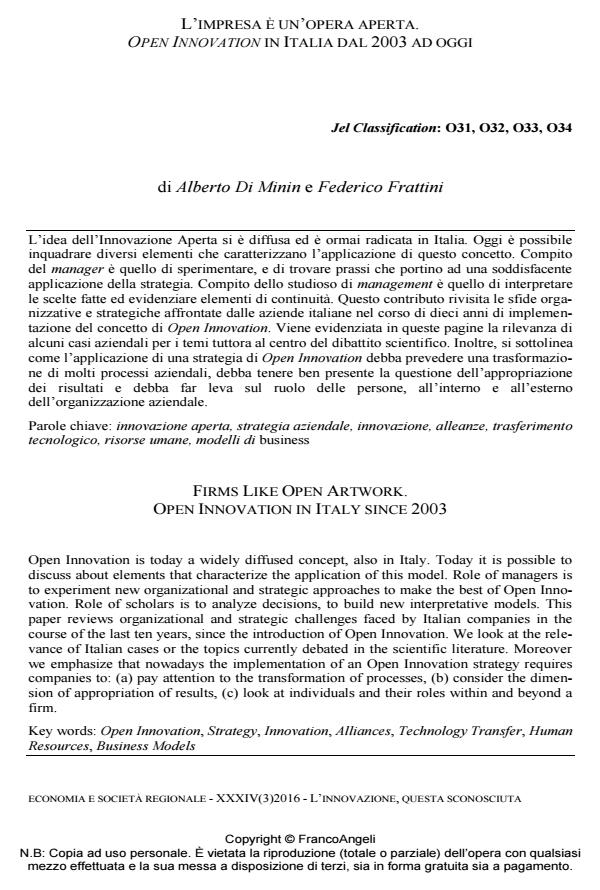L’impresa è un’opera aperta. Open innovation in italia dal 2003 ad oggi
Titolo Rivista ECONOMIA E SOCIETÀ REGIONALE
Autori/Curatori Alberto Di Minin, Federico Frattini
Anno di pubblicazione 2017 Fascicolo 2016/3
Lingua Italiano Numero pagine 19 P. 19-37 Dimensione file 363 KB
DOI 10.3280/ES2016-003002
Il DOI è il codice a barre della proprietà intellettuale: per saperne di più
clicca qui
Qui sotto puoi vedere in anteprima la prima pagina di questo articolo.
Se questo articolo ti interessa, lo puoi acquistare (e scaricare in formato pdf) seguendo le facili indicazioni per acquistare il download credit. Acquista Download Credits per scaricare questo Articolo in formato PDF

FrancoAngeli è membro della Publishers International Linking Association, Inc (PILA)associazione indipendente e non profit per facilitare (attraverso i servizi tecnologici implementati da CrossRef.org) l’accesso degli studiosi ai contenuti digitali nelle pubblicazioni professionali e scientifiche
L’idea dell’Innovazione Aperta si è diffusa ed è ormai radicata in Italia. Oggi è possibile inquadrare diversi elementi che caratterizzano l’applicazione di questo concetto. Compito del manager è quello di sperimentare, e di trovare prassi che portino ad una soddisfacente applicazione della strategia. Compito dello studioso di management è quello di interpretare le scelte fatte ed evidenziare elementi di continuità. Questo contributo rivisita le sfide organizzative e strategiche affrontate dalle aziende italiane nel corso di dieci anni di implementazione del concetto di Open Innovation. Viene evidenziata in queste pagine la rilevanza di alcuni casi aziendali per i temi tuttora al centro del dibattito scientifico. Inoltre, si sottolinea come l’applicazione di una strategia di Open Innovation debba prevedere una trasformazione di molti processi aziendali, debba tenere ben presente la questione dell’appropriazione dei risultati e debba far leva sul ruolo delle persone, all’interno e all’esterno dell’organizzazione aziendale.
Parole chiave:Innovazione aperta, strategia aziendale, innovazione, alleanze, trasferimento tecnologico, risorse umane, modelli di business
- Innovazione e piccole imprese: dimensioni e prospettive analitiche Giorgio Gosetti, in SOCIOLOGIA DEL LAVORO 147/2017 pp.59
DOI: 10.3280/SL2017-147004
Alberto Di Minin, Federico Frattini, L’impresa è un’opera aperta. Open innovation in italia dal 2003 ad oggi in "ECONOMIA E SOCIETÀ REGIONALE " 3/2016, pp 19-37, DOI: 10.3280/ES2016-003002